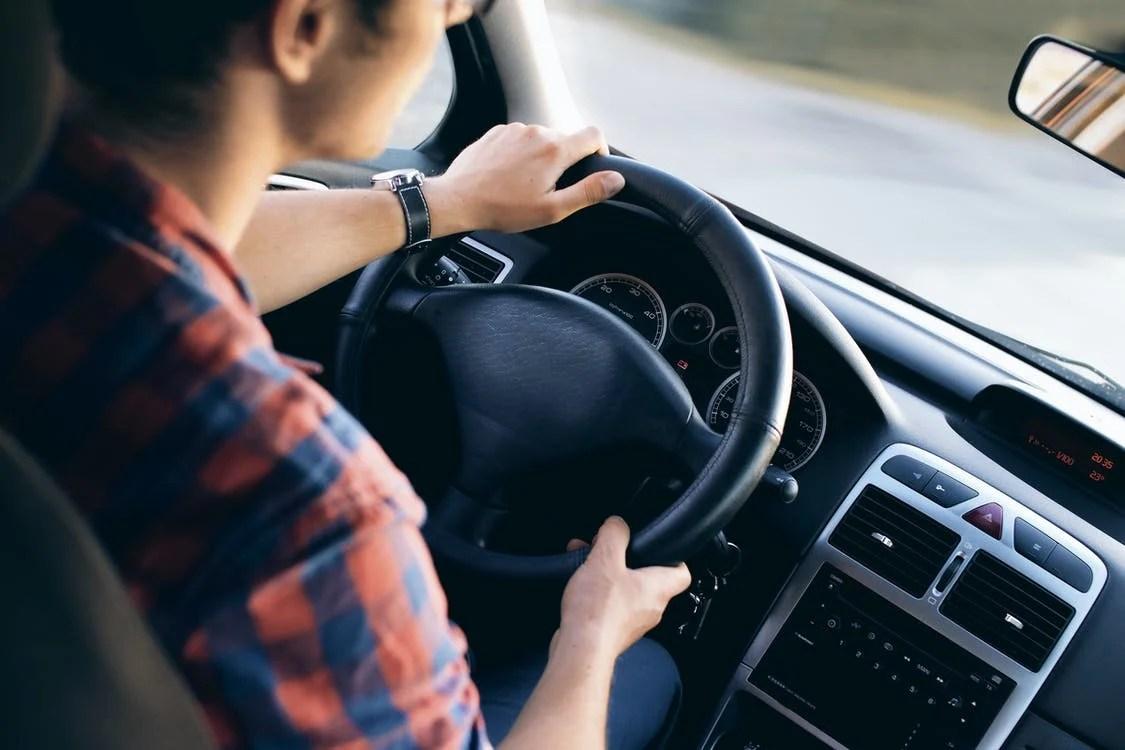
Many people suffer from driver anxiety, facing a daily struggle to control feelings of fear or dread while they commute or travel to take care of their responsibilities. By better understanding why we feel anxious about driving, we can incorporate these tips to help overcome driving phobias.
What Is Driver Anxiety?
Any experience that is stressful can cause anxiety, and driving is no exception. Navigating a vehicle through busy traffic, on rough roads, in bad weather, or over bridges raises the stress level of a normal drive and triggers anxiety or even panic attacks for some people.
Also called motorphobia, ochlophobia, and amaxophobia, driving anxiety is not a recognized medical condition according to the DSM-5, but it can be a sign of generalized anxiety disorder. For most people, however, the fear of driving is not severe enough to prevent them from getting behind the wheel, but makes the experience of driving a tense and uncomfortable ride.
What Triggers Driver Anxiety?
 One of the most common causes of driver anxiety is experiencing a trauma while driving or riding in a car. If you have been in a car accident or witnessed a roadside tragedy, it might make you feel anxious in similar situations down the road.
One of the most common causes of driver anxiety is experiencing a trauma while driving or riding in a car. If you have been in a car accident or witnessed a roadside tragedy, it might make you feel anxious in similar situations down the road.
Sometimes a combination of factors build up over time to cause a fear of driving or existing anxiety disorders may begin to focus around the dangers of driving a car. Some of the factors that can trigger drivers anxiety include:
- Weather conditions like snow, heavy rain, or fog
- Commuting or traveling alone, in isolated areas, or at night
- Driving across bridges, between construction barriers, or in tunnels
- Driving in heavy traffic or on fast-moving highways
- Navigating intersections, merges, or left-hand turns
- Witnessing a traffic accident or close calls or seeing skid marks or crash debris
Do You Have Driver Anxiety?
Driver anxiety can range across a spectrum. While there are no official symptoms because it is not a diagnosed condition, most people with driver anxiety will report havings some of these signs at varying levels of intensity:
- Avoiding driving whenever possible
- Feeling anxious when planning to drive or entering a vehicle
- Feeling constantly tense or worried or having feelings of doom or dread while driving
- Being exhausted after even a short car trip where you are the driver, due to hypervigilance
- Having heart palpitations, shaking, sweating, or shortness of breath while driving
Panic Attacks While Driving a Vehicle
If you experience the symptoms of heart palpitations, sweating, nausea, or difficulty breathing behind the wheel, you may be having a panic attack. If you have any of these intense feelings or physical symptoms, you should pull over and stop driving immediately.
If you have never had a panic attack before, it can be very frightening, and you should seek medical attention to rule out other causes. If you are prone to these attacks, you know that they will usually resolve on their own when you eliminate the triggers and practice deep breathing and relaxation techniques to calm your body down.
Having a panic attack while driving is a good reason to talk to a professional about how to overcome your driving anxiety. Together you might consider generalized anxiety treatments like exposure therapy, cognitive behavior therapy (CBT), or medication.
Top Ten Tips for Driving Anxiety

Most of us can lower our stress levels while driving by embracing these practical driving anxiety tips:
- Practice to grow your confidence. You earned your driver’s license by passing a driving test, but it takes practice to develop confidence behind the wheel. If you have been avoiding driving, make a point to practice during low traffic times and in good conditions to build your practical skills while you boost your driving self-esteem.
- Plan a perfect trip. If you are going somewhere unfamiliar or challenging, plan ahead and investigate your route. Is there construction or delays? What will the weather be like, or traffic conditions at the time of day you will travel? Also plan to bring a friend along who can also drive so that you never feel you have to push past your skill level.
- Take good care of your mental health. Incorporate some relaxation techniques and self-care habits into your driving routines. When you find yourself growing tense, focus on these tools to lower your stress level and focus your mind on something other than your anxiety.
- Make your car a calmer place to be. There are two factors to think about when you get your vehicle ready to travel. Audio-books, relaxing music, or an uplifting playlist can set the right tone when you hit the road. A calming aromatherapy air freshener can keep you smelling zen the whole trip.
- Feel well-prepared. You can also gain peace of mind by knowing you have a roadside emergency kit, a first aid kit, and other basic survival items stored in your vehicle. Having a mechanic checkup, staying up to date on oil changes, and pulling in for a tire pressure check can all help you relax behind the wheel.
- Make technology your friend by using driving-friendly phone apps, hands-free devices, GPS, backup cameras, and other safety technology designed to make driving easier, safer, and more enjoyable.
- Try virtual reality driving. Virtual reality can be a fun way to desensitize yourself to the visual and auditory stimulation of driving in a completely safe environment. Some therapists use VR therapy to help those with phobias overcome their fears. Even realistic driving games can help with judging speeds, distances, and moving obstacles.
- Set achievable goals for yourself. No matter your driving skill level, setting goals and stretching yourself builds confidence that is based on proving to yourself that you can do it. Add a non-essential destination to your next outing. Explore a new park or navigate a farmer’s market parking lot. Take the tunnel. Count each of these small steps as a mile marker on your journey to more confident driving.
- Give yourself permission to avoid danger. When the weather is bad, roads are icy, or you know you are tired, the wise choice is to stay off the road. Some fear while driving is healthy and productive. If you find yourself driving in dangerous conditions or have a close call, stop and take a break. Arriving safely is always more important than arriving when expected.
- Take a defensive driving course. Brush up on your knowledge of the best practices for safe driving. How closely should you follow another vehicle in different conditions? How much does rain affect your stopping distance? Studying the art and science of driving and staying up to date on your state’s traffic laws will sharpen your skills and boost your confidence.
Gain Driving Confidence with Ticket School Courses
 With state-approved defensive driving courses available online, you can tackle the challenges of driver anxiety from the comfort of your living room or on any connected mobile device. If you’d like to know more or enroll in an online defensive driving course, browse our available courses today.
With state-approved defensive driving courses available online, you can tackle the challenges of driver anxiety from the comfort of your living room or on any connected mobile device. If you’d like to know more or enroll in an online defensive driving course, browse our available courses today.
While many people turn to Ticket School to keep a clean driving record after a ticket, if you are wondering how to help driving anxiety for yourself or a loved one, our comprehensive defensive driving courses offer skills, knowledge, and know-how on the journey to becoming a safer, more confident driver. You might even save money on your car insurance!
